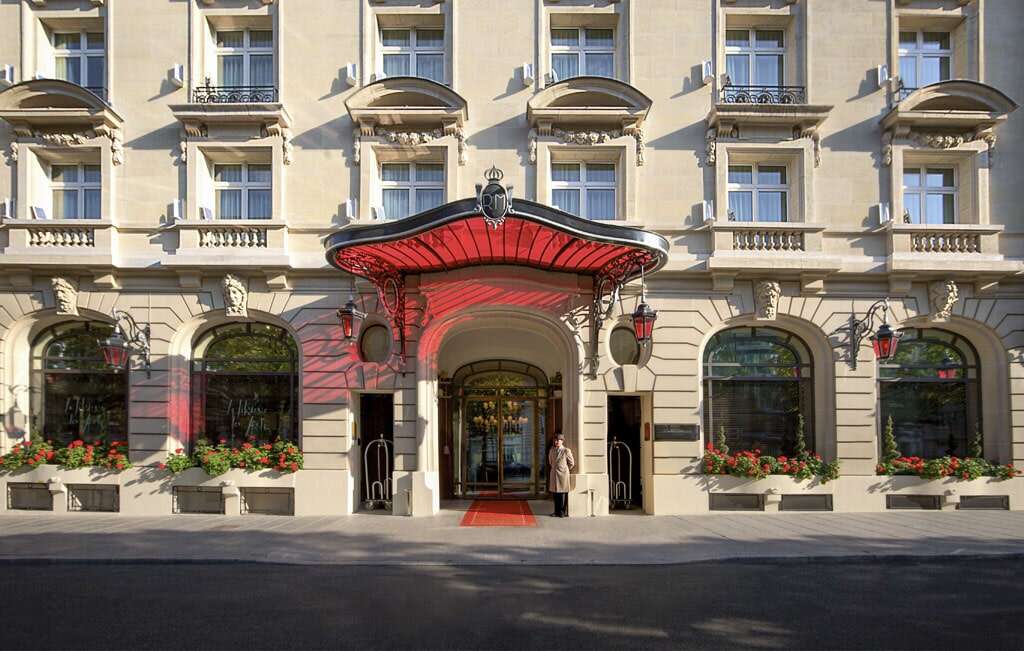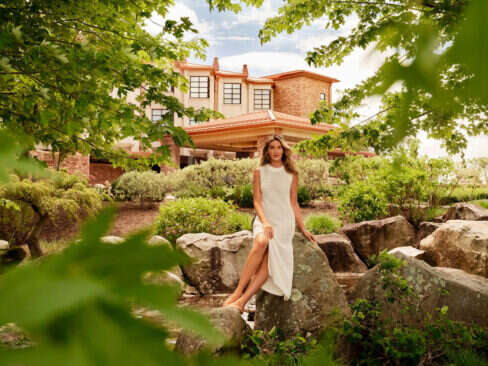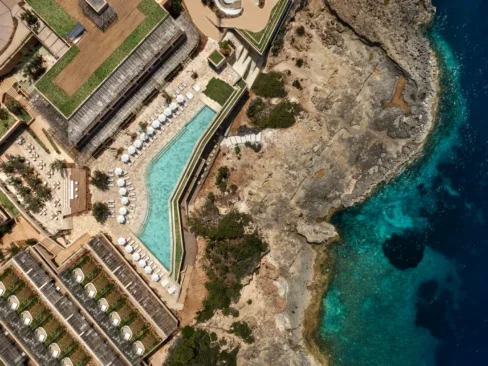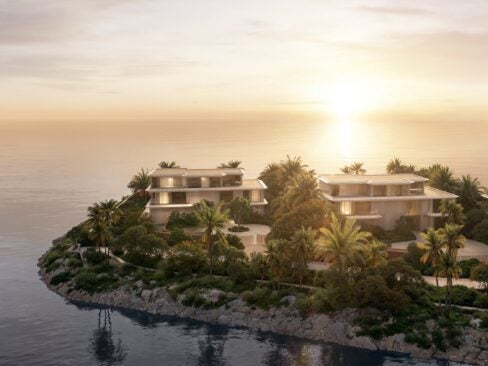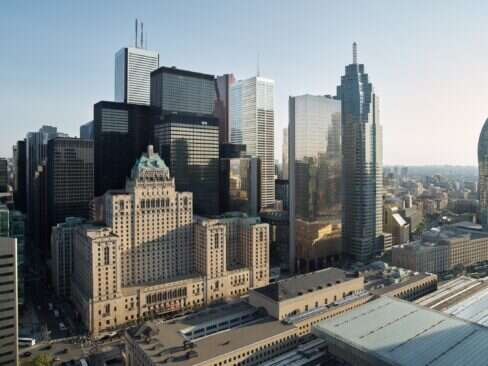Le Royal Monceau Raffles is one of Paris’ twelve ‘Palais’ hotels. If the long walkway of jewelry shops embedded in the hotel’s façade does not delay you, revolving doors will on arrival take you from a peaceful avenue off the Arc de Triomphe and into the highly designed world of Philippe Starck, the mind behind the reinvention of the Monceau in 2010 after a two-year restoration.
These are hallowed halls. The hotel first opened in 1928, and was requisitioned during World War II, when it hosted Eisenhower and Montgomery. Ho Chi Minh stayed here during the Fontainebleau Conference, and David Ben Gurion and Golda Meir signed the declaration of the State of Israel here in 1948.
From the start, Le Royal Monceau was conceived as an Art Deco antidote to Paris’ more rococo offerings. Its design attracted a heady mixture of artists – Hemingway and the French-American icon Josephine Baker – and avant-garde aristocrats such as Yashwant Rao Holkar, the Man Ray muse and Maharaja of Indore. Set around a courtyard, the hotel retains its grand early 20th-century proportions. The bars and restaurants have cathedral-like arched windows and vaulted ceilings, the rooms are expansive and airy.
[See also: Inside the Most Exclusive Hotel Suites in Paris]
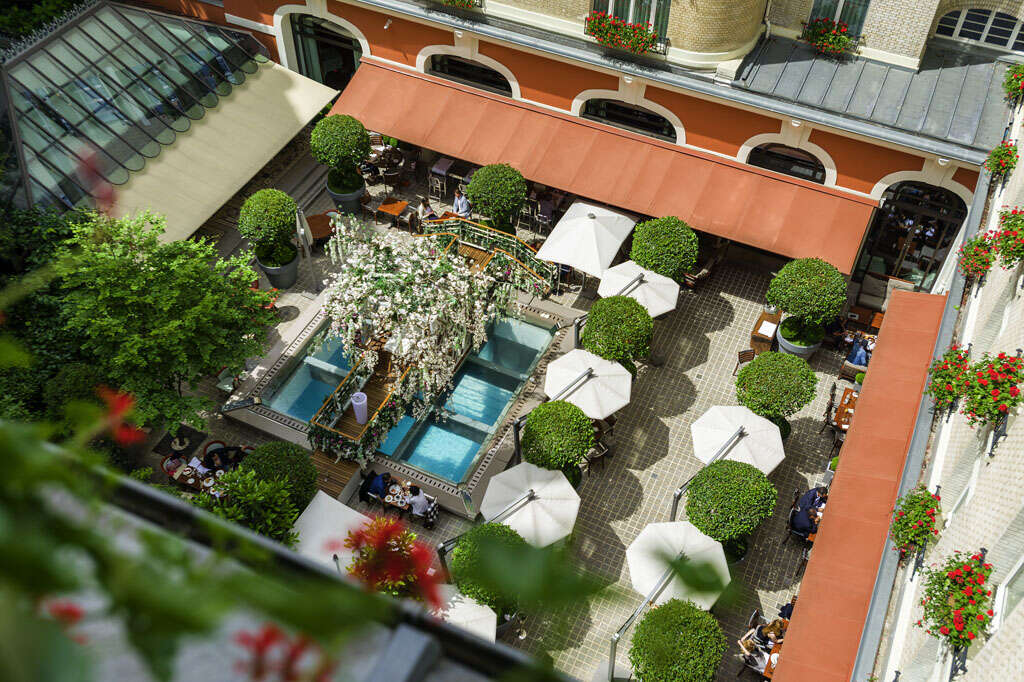
In 2008 a demolition party was held to ready the hotel for a renovation led by Starck, who Steve Jobs chose to design his superyachts. As the designer of the ghost chair – a translucent polycarbonate take on Louis XV style – Starck was well-suited to reimagine the 1920s for the 21st century. At the Monceau, he has softened the hard lines and beveled mirrors of Art Deco with warm wood, amber lighting, linen hangings and organically curved blown-glass lamps.
The world of Parisian art and design is central to the Monceau’s identity. The hotel has a gallery, an art-house cinema, an art library and a vast collection, the display of which extends from the public spaces into the rooms. You can call upon a private collection of sculptures, photographs, prints, and sketches for the duration of your stay.
STAY
The hotel boasts 149 rooms and suites today. Starck’s abhors ‘structurally empty’ hotel rooms – he once told the New York Times that he found them “damaging and depressing.” His rooms are designed to feel lived in, with desks that feature his own glass-covered map of Paris.
[See also: La Réserve Eden au Lac Zurich: Phillippe Starck’s Imaginary Yacht Club]
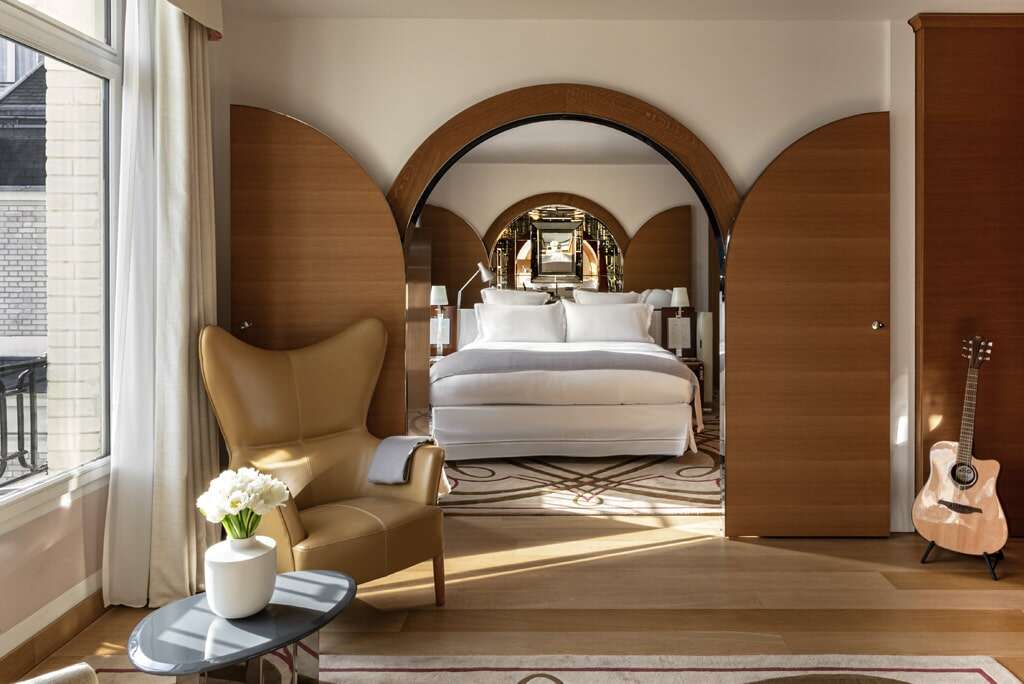
At the age of 30, Starck designed the private quarters of the Élysée Palace for France’s then-president, François Mitterrand. He tussled with Mitterand over the president’s demand that his bedroom have shelf space for 14,000 books. Starck didn’t want space for any. A bedroom, he felt, was no place for reading – it held its own purpose.
Mitterrand won then, but Starck has realized that sense of a bedroom’s sole purpose at the Monceau, where extraordinary beds are set in space and book-ended across the room by floor-to-ceiling mirrors. In the suite that I stayed in, the bed was almost a room in itself: vast and soft with linen sheets and goose-down pillows.
We were hosted in the Gallery Suite, one of 20 in the hotel, with a balcony that looked out onto the hotel’s deep and spacious inner courtyard. As part of his reinvention, Starck retained the classic Parisian bolt openings of the windows, which do a great deal to give his rooms that lived-in quality.
[See also: Akelarre, Review: Savoring Elegance in San Sebastian]
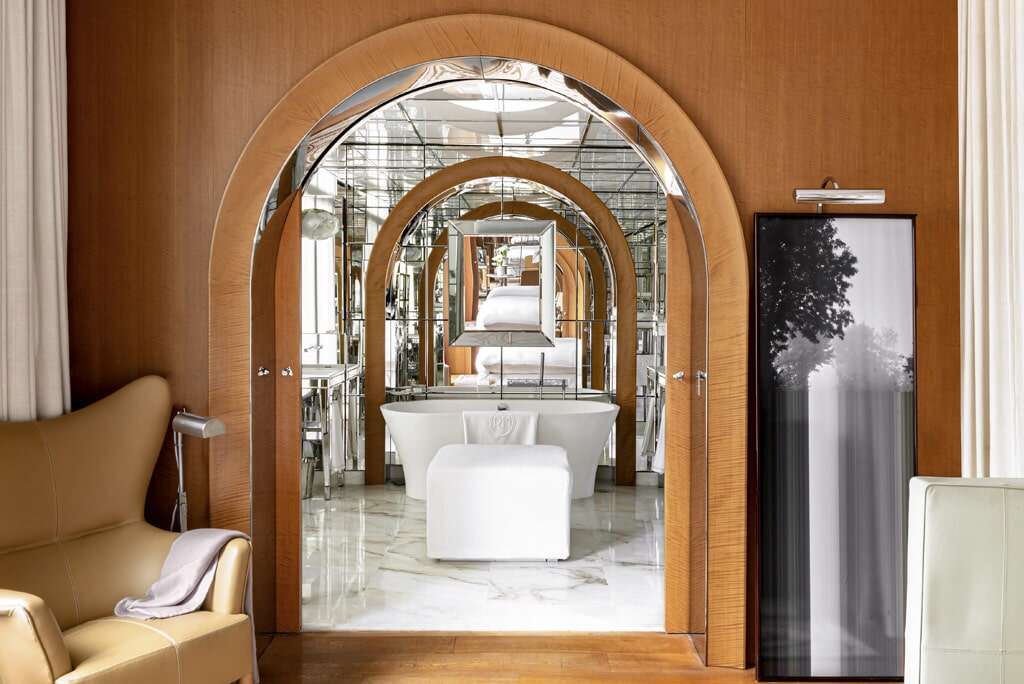
It may be worth staying here for the marble-floored, mirror-walled bathroom alone. The doorway to it has the frame of a 1920s ocean liner, but once inside you are in a world of glass with stylishly shallow sinks and out-of-sight taps, and a bath that could fit three people.
There is an extra water closet by the entrance to the suite, and a walk-in luggage room. Gracious linen curtains allow you to divide the bedroom from the living room on demand.
DINE
The hotel has two restaurants, Il Carpaccio (Italian) and Matsuhisa (Japanese). The former – the work of chefs Oliver Piras and Alessandra Del Favero, along with the Da Vittorio family – won a Michelin star in 2022, and was named the best Italian outpost in the world by one authority, 50 Top Italy, in 2024. The pastry chef Yazid Ichemrahen is behind Il Carpaccio’s puddings.
Matsuhisa is Nobu Matsuhisa’s first restaurant in France, combining Japanese and Peruvian cuisine. The hotel’s Long Bar features a long bright table running down its center. Starck designed it to bring the hotel’s guests together, giving the space the feel of a welcoming club room while retaining all the luxury of a Palais bar.
[See also: Six Senses Rome is Bringing New Life to the Eternal City]
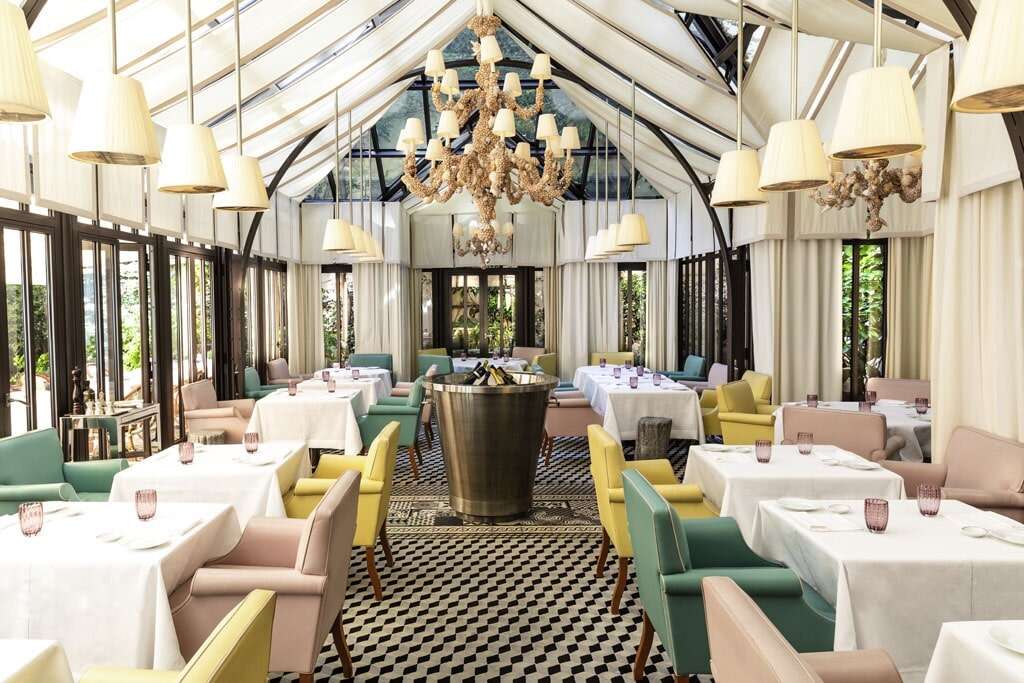
RELAX
The 75-ft-long pool, said to be frequented by a post-presidential Nicolas Sarkozy, is cleverly designed. It is underground and Starck had only one light source to work with – a central shaft that floods the pool with sunlight from the courtyard above.
A subtle trick furthers the impression. Two large curtains, backlit by a floor light, have been drawn against the walls at end either of the pool, creating the impression that great windows lie behind the curtains, drawn to soften the glare of the sun.
[See also: Two New Paris Hotels for Your Next Jaunt to the City of Lights]
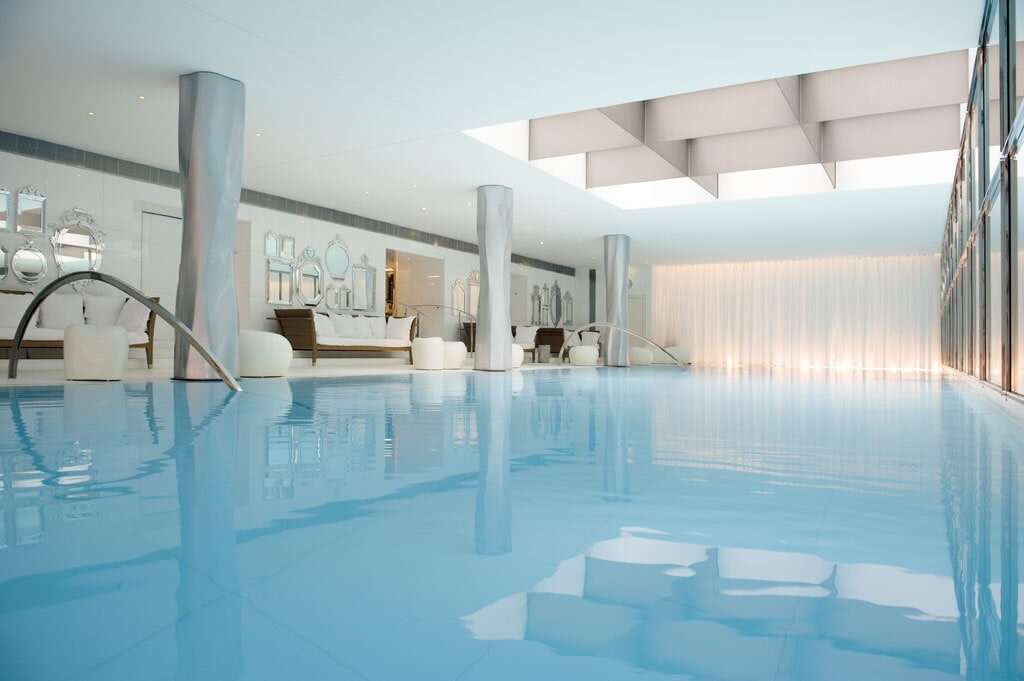
The pool is complemented by a warmer secondary pool, as well as a sauna and steam room. Two long sofas next to the pool are layered in cushions. The hotel’s towels are extraordinary.
EXPLORE
The hotel is a short walk away from an eponymous park, the Parc Monceau, the best neighborhood park in western Paris. You are also close to the luxury shops of the Champs-Élysées. Good alternative restaurants in the area include Fouquet’s, inside the Hôtel Barrière, and a little further away, Beefbar. If in search of a drink, don’t miss the Bar Anglais.
[See also: Shangri-La Paris: A Palace Hotel Fit for Kids]





